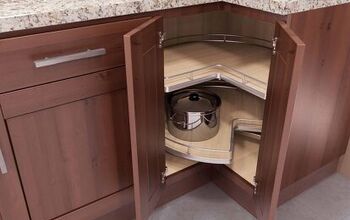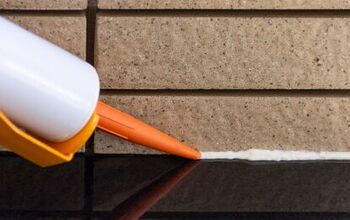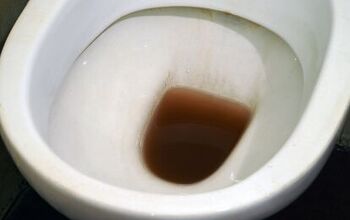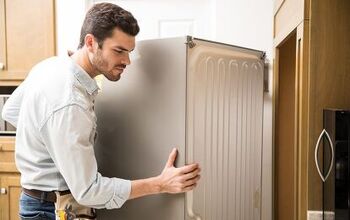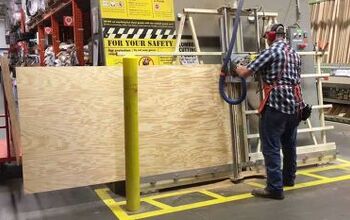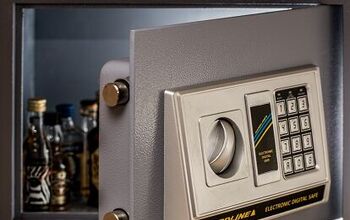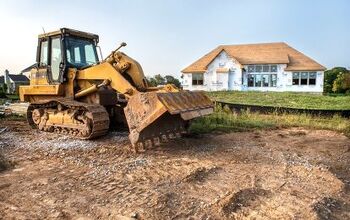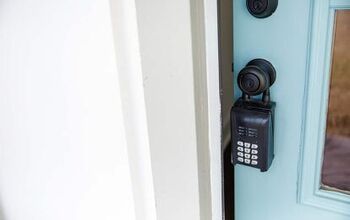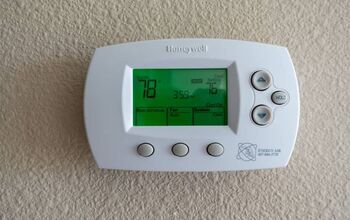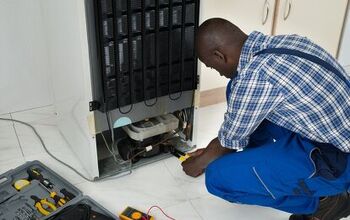How To Clean A Gas Furnace Burner (Quickly & Easily!)

Whether you are experiencing issues with your gas furnace or are simply performing routine maintenance, keeping your furnace clean is imperative. When components get dirty or clogged, it can lead to components working improperly or not at all.
You can opt to clean your gas furnace burner on your own, but it is important to know how to do it. It’s a pretty simple process, too. Turn off the gas, take the burners out, clean them, and then replace them once again. That’s all there is to it when cleaning your furnace burners, leaving it ready to run efficiently once again.
Step 1: Turn Off the Gas
The good rule of thumb when doing any kind of maintenance on your furnace is to start by turning off the gas. Not only will you want to avoid directly breathing in the gas but there is also the chance of fire or even explosion when that gas is present.
Keeping yourself and your home safe during the cleaning process is imperative. Turn off both the gas and the electricity to the furnace before you get started. You can turn the gas off at the main valve and turn the breaker off that directs power to your furnace.
Step 2: Remove the Burner
Now it’s time to find the burner. To locate the burner in your furnace, you will have to start by taking the front panel off. When in doubt, refer to the owner’s manual to better understand how to locate and remove the front panel.
With the panel off, you should be able to find your burners in the chamber that is located directly above the blower. Double-check the manual if you have any questions or concerns before proceeding with the next step.
Step 3: It’s Cleaning Time
With the burners removed and easily accessible, it is now time to clean. You will want to avoid any highly abrasive cleaners. Also, make sure that the brush you use (if you do) is not wire or stiff-bristled; you want something that has a soft brush to it.
Have a vacuum ready to remove any loose debris that can settle in on the burners. Debris can also take the form of dust and rust, so remove that as well. It is also a good idea to tap the burners gently in order to loosen some of that debris.
Ensure that the burners are completely clean. Give them a gentle wipe down using a standard cleaner and a soft cloth to ensure that they have been completely cleaned before moving on to the next step.
Step 4: Replace the Burners
Now that your burners have been totally cleaned, it’s time to put them back where they belong. Carefully return the burners back into the chamber located above the blower, snapping them back into place.
When the burners are back in place and secure, replace the front panel. Turn the power and the gas back on again and test the furnace to ensure that it is working properly once again.
Checking the Igniter/Flame Sensor
Cleaning the burners is important but it isn’t the only thing that you should be doing during this process. There are a couple of components worth checking on to ensure that they are in the best condition possible.
- Check the igniter. If you don’t have an ohmmeter, now is the time to get one. Check the resistance of the igniter to ensure that it is working properly. Should your furnace have a silicon nitride igniter, the range should be between 11 and 17 ohms. In the case of a carbide igniter, the range should be 50 to 100. When the readings fall outside of those parameters, then you will have to replace the igniter. Don’t forget that you will need to test the igniter when it is cold, and the furnace isn’t running.
- Check the flame sensor. If your furnace has a flame sensor, hook the multimeter up to it along with the sensor wire then start the furnace up into a heat cycle. The readings should generally be somewhere between 1.5 and 4 UA, though some only require 0.5 so check your manual first. In most cases, when the sensor tests under 1, you will need to replace the sensor as it will likely give out soon.
Other Things to Check
While cleaning the burners is the most important thing here, there are other things that bear looking at. Your furnace has a number of essential components and there are plenty of factors that can contribute to them wearing down and, ultimately, not working.
Heat Exchanger
The burners can become clogged up with dust, dirt, debris, and even rust. The heat exchanger is much the same in this way. When inspecting the burners, take the time to give the heat exchanger a once over as well.
Look for excessive rust, holes, or cracks. You can even get fancy and get an assistant tool like a camera or a dye penetration inspection system. Check the metal flue and make sure that it is properly supported before moving on.
Condensate Line
This applies to 90% of most furnaces. For these furnaces, the condensate lines can become a common issue and lead to other regular issues. These are generally longer run times than normal, which can cause the furnace’s pressure switch to become locked out.
The annoying thing is that, when this happens, the water will drain out and everything works fine again by the time the technician gets there. Blow out the condensate line while inspecting the other components to ensure that this does not happen to you.
Perform a Combustion Analysis
It cannot be understated just how important the safety measures in your furnace are. They are in place to prevent carbon monoxide poisoning, fire, and even explosion. Sometimes, you will need to perform tests to ensure that the safety components in your furnace are working properly.
- Start the analyzer. Startup your analyzer while you are outside the home to ensure proper calibration. As the furnace starts, measure and take note of the highest CO level in the first minute of operation. This range will be 100-400 ppm for natural-draft furnaces, and 100-1,000 ppm on 90% condensing furnaces.
- Keep an eye on the levels. While each manufacturer has different levels, you should see the CO level fall to around 100 ppm or below within the first three minutes of starting the furnace. When the CO starts to climb slowly during the run cycle, this can be a sign that there is a major safety issue. Further testing will be necessary, and it may require the replacement of certain components.
- O2 levels. Normal oxygen levels will be between 6% and 9%, remaining stable throughout. A lot of furnaces will have factory settings that are higher than this; to get maximum efficiency, you will have to adjust it down to the 6-9% range.
- Shut down. When you shut down your furnace, you should immediately notice a drop in those CO levels. A brief increase can be an indication that the gas valve isn’t closing fast enough and may need replacing in the short term.
Check the System Static Pressure
The first thing to do here is to determine whether your system is a variable-speed motor or a non-variable-speed one. The non-variable speed motor tends to have a max design total of external static pressure (ESP) around 0.50-in wc.
The variable-speed motor, meanwhile, will be closer to 0.80-in wc. Find a fan chart and refer to that to set the correct cfm for your specific furnace. This will allow you to complete your gas pressure settings properly.
How Much Does It Cost to Clean a Gas Furnace?
Should you choose to do the cleaning yourself, the answer is pretty simple: nothing. All it requires are a few average household cleaning tools to get the job done. When you introduce a professional into the mix, however, that is where the costs can vary.
On average, the price can be anywhere between $50 and $300. It all depends on the state of your furnace and the amount of maintenance that will be required to perform a proper cleaning. Not only that, most HVAC companies have minimum service fees, too.

Ryan Womeldorf has more than a decade of experience writing. He loves to blog about construction, plumbing, and other home topics. Ryan also loves hockey and a lifelong Buffalo sports fan.
More by Ryan Womeldorf










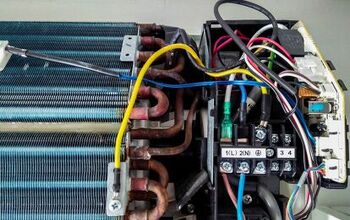
![The 5 Best Angle Grinders – [2022 Reviews & Buyer's Guide]](https://cdn-fastly.upgradedhome.com/media/2023/07/31/9071326/the-5-best-angle-grinders-2022-reviews-buyer-s-guide.jpg?size=350x220)
